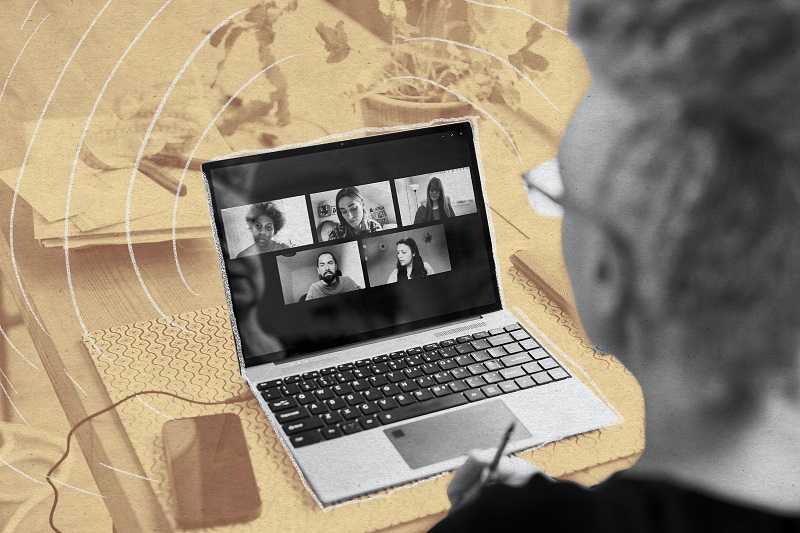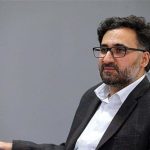Behamin Takhtaei, the Deputy Head of the Information Technology Center for Education, believes that the smart school and broadband internet project has not been effective enough in enhancing education and student productivity. She cites reasons such as entrusting this project to the private sector, which has led to a gap in schools' access to the internet. She argues that the internet in schools should be free, like water and electricity, following a consumption model
According to IDEA, Behamin Takhtaei, Deputy Head of the Information Technology Center for Education, says about the smart school project: “We have been following the smart school budget to some extent but after the outbreak of the coronavirus and platforms like Shad, the smart school project gained momentum because teachers had become more involved in this process and had to produce content on Shad.”
She continues: “I have repeatedly stated that we need free internet in schools, like water and electricity, because now all school activities depend on the internet. If we really want to implement blended learning and hybrid education in schools, the internet is a necessity.”
According to her: “In Azar last year, a set of circulars regarding blended learning was issued, and to implement this directive, it is certainly necessary to have internet access in schools that can be used at the classroom level to enable blended learning.
The Process of School Digitization
Takhtaei continues: The school digitization project dates back several years. Around 2009 and 2010, a comparative study was conducted in Tehran on the state of technology usage in classrooms, and starting from 2011, a directive was issued to schools, pushing them towards digitization.

Behamin Takhtaei: In essence, the main philosophy of digitization is to use technology tools to enhance the quality of learning in classrooms. Facilities such as virtual laboratories or virtual tourism tours like Pasargad and Persepolis.
In the Process of Equipping and Preparing
Takhtai mentions that several layers have been considered for school digitization. The first layer is providing the minimum equipment for digitization, including a computer, a video projector, and a projection screen. Ideally, schools should have computer labs, allowing students to search, code, and work on projects themselves.
According to her, the next layer involves having a curriculum or educational content that teachers can use, and teachers should be proficient enough to utilize these tools. Schools should also have access to the Internet.
Regarding the formulation of the school digitization guideline, she says that the implementation of this guideline was taken up by the Ministry of Education and schools. However, the necessary support from the government to fully implement it did not materialize. Nevertheless, school administrators took the initiative, and competition was created among schools. Public participation in equipping schools also had a significant impact.
Status of School Digitization in Major Cities
Takhtaei discusses school digitization in major cities: Many activities related to school digitization have been carried out with the help of public contributions. Given that the implementation of this project led to competition among schools, it can be said that this project has been largely implemented in major cities. About 99% of non-governmental schools, such as Shahed schools, Samt schools, and religious schools, have equipped their classrooms with the necessary technology. However, regular government schools have been less active. They have not all progressed at the same pace because the government budget does not cover the expenses in this area. Nevertheless, government schools located in certain regions have made more progress, while others have lagged behind. But there is still much work to be done. In recent years, there has been no special investment in equipping schools.
Bandwidth in Schools
Takhtaei also discusses the percentage of schools connected to high-speed bandwidth: Surveys from the past year show that 87% of schools have access to broadband. In urban schools, this number has exceeded 90%, while in rural schools, it is below 80%.
She states that the beginning of this project dates back 12 years when the issue of connecting a thousand schools to the national information network was raised in 2002. According to him, schools that could connect have already done so. Now, the task for all schools is to register their information in the student system.
Regarding the current status of school connectivity, she says that schools have their own portal and are required to register in this system. Essentially, all schools are connected in an administrative sense. Because processes like grading by teachers, student registration, issuing report cards, etc., are done through the system, all schools must be connected in some way. However, it is possible that a school hasn’t had a physical connection made yet, but in practice, access is provided to the school management. They either use their mobile internet or some other method.
In the current administrative context, there is no issue regarding access. Speaking about the connectivity of Tehran schools, she says that 100% of Tehran schools are connected to the internet. However, in reality, students do not benefit much from it; most administrative work is done through this connection. The bandwidth provided to schools is so limited that educational use of the internet is practically impossible.
She mentions an agreement signed with the Ministry of Communications to connect schools to the national information network. The list of schools to be connected has been given to the Ministry of Communications, and the plan is to connect urban schools to high-speed internet via fiber optics within the next three years.
Regarding the challenges of implementing this project, she says one of the challenges is the selection of high-income schools by internet service providers. ISPs work based on their business model, and naturally, they prefer areas where internet expenses are easier to cover.
There is No Budget for Schools
Takhtaei says that there has been no specific budget allocated for internet services in schools. She explains that during the first year, the connection is provided for free, a modem is delivered to the school, and support is free for the first year. Monthly internet usage for schools is also free for the first year. However, from the second year, schools are required to pay for internet services. Essentially, they have captured the schools as customers.
She continues, stating that if a budget for school internet services is not allocated within the school budget, which has not happened so far despite multiple requests, schools will likely not be able to use the services in the following year. This is because many schools, whose internet is currently provided through the cheaper ADSL lines, are told that the Telecommunications Department has cut their telephone lines and claimed they owe billions of rials. So, if the government does not seriously consider this issue, it becomes problematic.




No Comment! Be the first one.